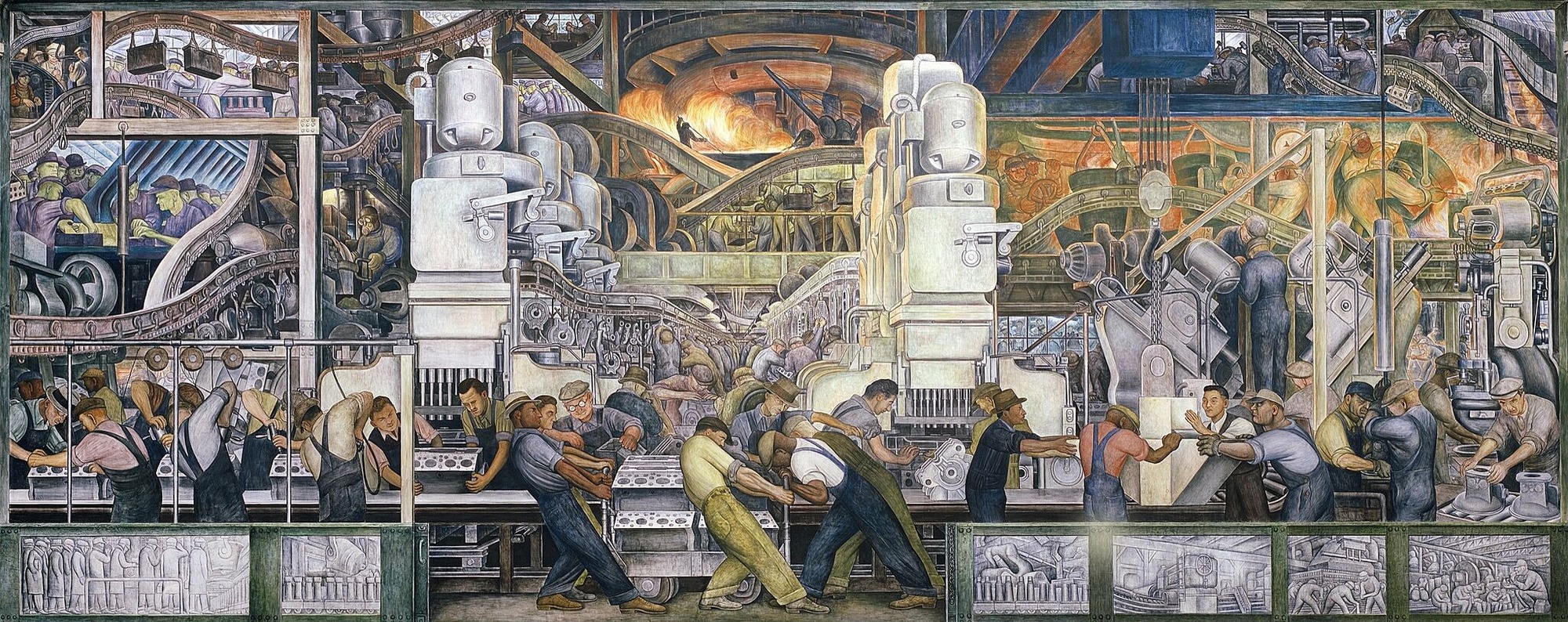Vida Americana
Mexican Muralists Remake American Art, 1925–1945
17 Feb 2020 - 31 Jan 2021

Diego Rivera
Lower panel of Detroit Industry, North Wall, 1932–33
Fresco
17 ft. 8 1/2 in. × 45 ft. (5.4 × 13 m)
Detroit Institute of the Arts; gift of Edsel B. Ford 33.10.N. © 2019 Banco de México Diego Rivera Frida Kahlo Museums Trust, Mexico, D.F. / Artists Rights Society (ARS), New York
Lower panel of Detroit Industry, North Wall, 1932–33
Fresco
17 ft. 8 1/2 in. × 45 ft. (5.4 × 13 m)
Detroit Institute of the Arts; gift of Edsel B. Ford 33.10.N. © 2019 Banco de México Diego Rivera Frida Kahlo Museums Trust, Mexico, D.F. / Artists Rights Society (ARS), New York
Mexico underwent a radical cultural transformation at the end of its Revolution in 1920. A new relationship between art and the public was established, giving rise to art that spoke directly to the people about social justice and national life. The model galvanized artists in the United States who were seeking to break free of European aesthetic domination to create publicly significant and accessible native art. Numerous American artists traveled to Mexico, and the leading Mexican muralists—José Clemente Orozco, Diego Rivera, and David Alfaro Siqueiros—spent extended periods of time in the United States, executing murals, paintings, and prints; exhibiting their work; and interacting with local artists. With approximately 200 works by sixty Mexican and American artists, this exhibition reorients art history by revealing the profound impact the Mexican muralists had on their counterparts in the United States during this period and the ways in which their example inspired American artists both to create epic narratives about American history and everyday life and to use their art to protest economic, social, and racial injustices.
This exhibition is organized by Barbara Haskell, curator, with Marcela Guerrero, assistant curator; Sarah Humphreville, senior curatorial assistant; and Alana Hernandez, former curatorial project assistant.
This exhibition is organized by Barbara Haskell, curator, with Marcela Guerrero, assistant curator; Sarah Humphreville, senior curatorial assistant; and Alana Hernandez, former curatorial project assistant.
